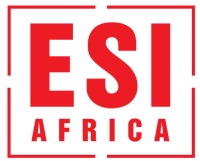Africa faces mounting pressure to scale up mine water solutions
Mine water can no longer be viewed purely as a legacy liability but must instead be repositioned as a strategic resource, say experts
Mine water management has emerged as a critical test of Africa’s ability to balance industrial growth with environmental protection and long-term water security.
A webinar (see above) hosted by Water Security Africa in partnership with ESI Africa underscored:
- the escalating pressure on shared catchments,
- the persistence of untreated acid mine drainage (AMD) and
- the urgent need for rehabilitation models that bridge mining, manufacturing and community needs
Africa’s mine water dilemma
Speakers noted that mining operations across the continent continue to generate vast volumes of contaminated water, much of it inadequately treated.
Acid mine drainage from abandoned sites remains one of the most severe threats, with limited public or private investment directed at long-term remediation.
The absence of clear timelines, coordinated oversight and sustainable funding pipelines has allowed the problem to deepen, despite its well-documented impact on ecosystems, human health and downstream industries.
The experts stressed that the growing competition for water resources which is being driven by population growth, industrial expansion and climatic pressures, is intensifying the need for integrated solutions at catchment level.
Need to introduce latest technologies
They argued that mine water can no longer be viewed purely as a legacy liability but must instead be repositioned as a strategic resource capable of supporting industrial processes, enhancing community water supply and contributing to national ESG targets.
The session highlighted emerging technologies capable of improving AMD treatment efficiency, including systems that enable the recovery and valorisation of by-products.
These innovations could help offset treatment costs while supporting circular economy objectives in sectors such as manufacturing, chemicals and construction.
Cooperation key in addressing mine water issues
The discussion highlighted how coordinated rehabilitation efforts, advanced filtration systems and partnerships with regulators such as the Department of Water and Sanitation (DWS) are starting to yield scalable models.
Successful examples cited also emphasised the value of aligning operational responsibilities across the mining lifecycle to minimise long-term environmental risk.
The speakers agreed that while the challenges remain substantial, mine water rehabilitation offers an opportunity for African countries to secure water resources, reduce environmental liabilities and stimulate sustainable industrial growth.
They said the next phase requires catalytic investment, regulatory alignment and broader collaboration across sectors. ESI
Cover photo: mariusz_prusaczyk©123rf.com



